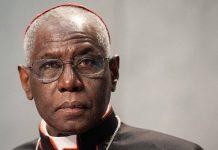From the Editor (Friday, 31/10/2014, Gaudium Press) How many times have we had the opportunity to see the ocean? Mysterious, vast, impressive, the sea is sometimes quiet, taking a relaxed sunbath; sometimes showing a majestic force in the momentum of the waves. Who among us could argue that, placed in front of such greatness, we would not feel small and powerless? If this happens in relation to water, a material creature far below human nature, it is even truer with respect to the divine mysteries.
As limited and contingent beings, we cannot uncover with our intelligence all supernatural realities especially those related directly to the ultimate Being, God Himself. Rightly taught by the doctrine of the Church: “We know better who God is not than what He is” 1 In fact, to put in human words the ineffable divine mystery, we use metaphors and analogies either in a positive way, conferring to God qualities of the created beings in an infinite maximum degree or in a negative way excluding Him from any imperfection.
On the positive way, we can identify in God nine attributes: perfection, endless kindness, beauty, immutability, immensity, ubiquity, eternity, uniqueness and simplicity. About this last attribute we will do some comments.
God is absolutely simple, according to the teachings of Pope Innocent III at the Fourth Lateran Council, with the doctrine being subsequently reaffirmed on other councils:
“We strongly believe and confess that there is only one true God, eternal and immensurable, unchangeable, incomprehensible, almighty and ineffable, Father, Son and Holy Spirit: three persons but just one essence, substance or absolutely simple nature”. (DH800)
At the same time, all creatures are composed of material and shape that determines what they are. For example, in human beings the soul gives shape to the body. According to Philo of Alexandria a body which has not a soul is merely a corpse. If we analyse even deeper, we will notice that all creatures have a combined nature; it could be in its essence or existence, potency or act, matter or form.
Unlike what happens in the visible world, where all things are made of or composed from different beings, in God there are no parts or composition, for He is pure spirit. 2 He is absolutely simple. Incompatible with any composition, multiplicity and matter, regardless if they are physical, metaphysical or logic. Stating that God is simple, it means that He is above creation, without any potential mixed content, since, as the Angelic Doctor teaches us, God is “pure act” 3, being in consequence pure form.
Although in several passages of the Sacred Scripture there are many references to the powerful arm of God and marvels made by His right hand, it does not mean He has a body, and, therefore, any material. We are the ones who assign those qualities to a purely spiritual being trying to understand His way of acting. In Him even essence and existence are not distinguished since He Himself revealed: “I am who I am.” (Exodus 3:14) In fact, God is the most perfect and pure spirit and therefore indivisible and simple.
Due to our intellectual fragility, we are unable to understand clearly this doctrine which will be revealed to us in heaven, where, illuminated by the light of glory, we will see God face to face as He really is (Jn 3,2). Meanwhile, Providence wants that we, still on earth, can catch a glimpse of God’s simplicity reflected on material creatures, especially on human beings created in His image and likeness.
Reading the lives of saints, we can often find different aspects of God reflected in their lives. It could be charity or obedience; poverty or magnanimity and so on.
But, how is it possible that complex and material creatures can manifest God’s absolute simplicity?
Of course God’s simplicity is not represented in its essence but only as an analogy. Generally speaking, the virtuous souls is simple once it was got rid of the complications born of the vice. Thus, these souls are fertile ground for the action of grace and respond sincerely to the divine calling.
Let us take the example of St Therese of the Child Jesus, who even during her sickness was always joyful and satisfied. While laid in a bed, in the convent infirmary, she used to contemplate the sunset and to rejoice with the sight of the stars in the sky. One day they moved the location of her bed and she commented: “Oh, I’m so glad! Now I can admire the new leaves of the vineyard.”
The simple vision of nature -just seen from human eyes- used to raise St Therese’s soul to the contemplation of the One who is Absolute Beauty, keeping her always joyful in spite of her sufferings.
If we want to be simple and contemplate the glory of God, let us not only admire but also imitate the virtues of the saints. As the great St Augustine said: “What is to follow, but imitating?”4 this is the best way to assure our happiness in heaven, where with the Angels and saints, we will easily understand the ineffable divine mysteries.
By Sister Ariane Heringer Tavares, EP
—-
1 ROYO MARÍN, Antonio. Dios y su obra. Madrid: BAC, 1963, p. 45.
2 INSTITUTO TEOLOGICO SAO TOMÁS DE AQUINO .- 1NSTITUTO FILOSÓFICO ARISTOTÉLICO TOMISTA. Deus… Quem é Ele? São Paulo. Lumen Sapientiae. 2012. p.41.
3 TOMÁS DE AQUINO, Santo. Suma teológica. I. q.2. a3.
4 AGUSTÍN, San. De sancta Virgin. 27 (PL 40, 441): “Quid est enim sequi, nisi imitan?”



































